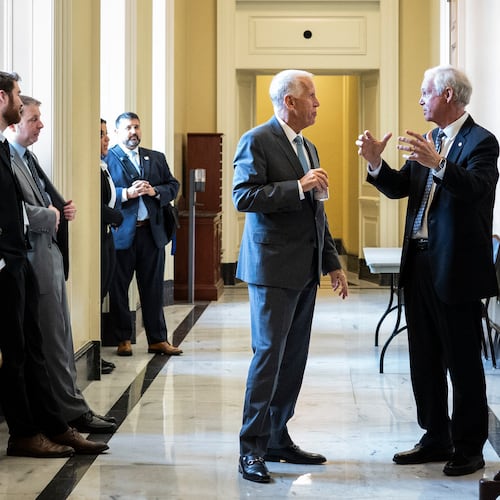Something has gone awry in America. A presidential candidate meeting with his parole officer is not the one facing questions about his viability. Yet that scenario unfolded last week when one of the nation’s most prominent pollsters, Nate Silver, noted President Joe Biden’s approval rating had hit an all-time low and mused, “there’s some threshold below which continuing to run is a bigger risk.”
Though President Joe Biden faces a slew of pressing issues, none is more significant to his electoral prospects than the state of the economy. During my time as a baseball player, I used to remind myself I was never as bad or as good as the headlines suggested. The Biden campaign would be well served to apply that same lesson to the disconnect between the state of the economy and its public perception.
Credit: Geoff Duncan
Credit: Geoff Duncan
Contrary to what you’ll hear at a Trump rally or on MAGA social media, the economic conditions in this country are not in a state of utter disrepair. For some, the value of your house and retirement accounts have never been higher and your job has never been more secure. In fact, citing surging growth, rising wages and unemployment rates at historic lows, a headline in The Atlantic declared, “The U.S. Economy Reaches Superstar Status.”
The polls tell a different story. Public confidence in Biden’s handling of the economy hit the lowest point for any president since 2001. When asked about a vision for the country, only 51% of voters said Biden had one, compared with 67% for Trump. More than half (56%) of voters think we are in a recession, even though gross domestic product (GDP) has been growing.
That is the intoxicating and disorienting power of inflation and leads to the whipsawing battle of headlines, and the most prominent headwind to Biden’s campaign.
Yes, the latest numbers from the Consumer Price Index (CPI) showed a second consecutive month of inflation slowing. But the 3.3% May index is still higher than the Federal Reserve’s 2% target rate. Further, that’s inflation as measured by economists. As David Axelrod, former top strategist to the Obama campaign, observed, “you can cite data until the cows come home, but what counts is how people are perceiving the economy.” Looking at inflation since Biden took office in January 2021 and the cumulative change is 19.3%.
Like it or not, that’s what voters are feeling when they go to the store. In fact, high prices just drove U.S. consumer sentiment to a surprising seven-month low.
There have been encouraging signs of late that the Biden campaign senses the problem. A new advertisement features the President talking to the camera and saying, “I know what it’s like to struggle. I know many American families are fighting every day to get by.” That’s a better message than trying to convince people what they are feeling isn’t real.
There are two other things Team Biden could do to seize the economic advantage voters give to former President Trump. First, remind the country that we didn’t get into this problem overnight or under one administration. When Biden took the keys from Trump in early 2021, much like in a used car transaction, there were serious hidden problems under the economic hood.
You don’t need a doctorate in economics to understand that excessive government spending is fueling inflationary challenges. The national debt grew by $7.8 trillion dollars under Trump, and is on pace to grow by $7.9 trillion by the end of Biden’s first term. Both parties are to blame.
Second, in a nod to suburban voters who might be on the fence about their presidential vote, admit that the country, with its $34 trillion debt, has a spending problem. In retrospect, we didn’t need the $1.9 trillion American Rescue Plan that Biden signed in March 2021. Even the willingness to concede the obvious would go a long way toward winning over the so-called “double hater” voters. A recent NPR/Marist poll showed Biden with a narrow edge (49%-47%) among voters who view both candidates unfavorably.
After my fastball ran out of enough velocity to keep paying my bills, I stumbled into a marketing business. Like watching a large ship make an about-face, I learned that new messaging usually takes an uncomfortable amount of time to sink in.
With the first debate looming next week and the election only four months away, the hour is getting late for both candidates. This election will be won or lost by those voters in the middle. Even a hint of fiscal sanity will go a long way with the high concentration of conservatives who know they don’t like Trump but need something to get on board with Biden.
About the Author
Keep Reading
The Latest
Featured



